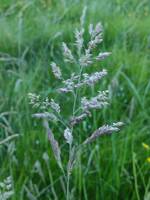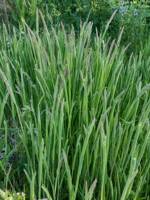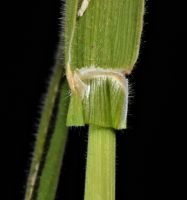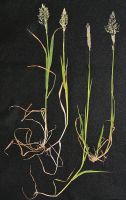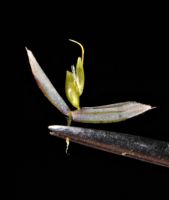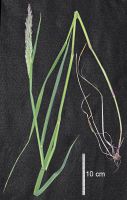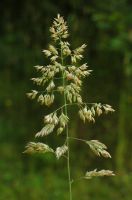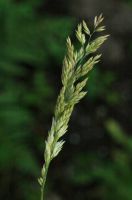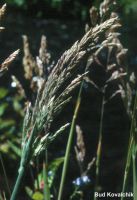Distribution: Occurring chiefly west of the Cascades crest and east in the Columbia River Gorge in Washington; Alaska to California, east across much of North America to the Atlantic Coast.
Habitat: Balds, prairies, roadsides, meadows, lawns, wastelots, and other disturbed open areas.
Flowers: May-July
Origin: Introduced from Europe
Growth Duration: Perennial
Conservation Status: Not of concern
Pollination: Wind
Tufted perennial, grayish with velvety pubescence, the culms 5-10 dm. tall, sometimes becoming decumbent.
Sheaths open; ligules 1-2 mm. long, with marginal hairs; blades flat, 8-10 mm. broad.
Inflorescence a congested panicle 4-15 cm. long, grayish, purplish-tinged; spikelets 2-flowered, the lower flower perfect, the upper staminate, the rachilla prolonged as a short stub beyond the upper floret; glumes 3-4 mm. long, hairy on the nerves, the second much broader than the first, often with a very short, subapical awn; lemmas about 2 mm. long, smooth and shining, the upper with a strongly-hooked, subapical awn shorter than the glume; paleas thin, subequal to the lemmas; stamens 3.
Publication: Sp. Pl. 2: 1048. 1753.
PNW Herbaria: Specimen records of Holcus lanatus in the Consortium of Pacific Northwest Herbaria database
WA Flora Checklist: Holcus lanatus checklist entry
OregonFlora: Holcus lanatus information
E-Flora BC: Holcus lanatus atlas page
CalPhotos: Holcus lanatus photos





















